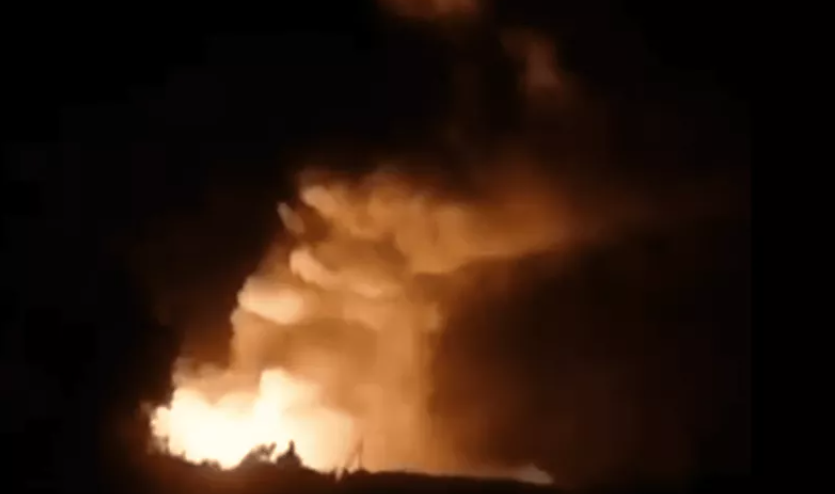Ukrainian drones struck a major ammunition depot in Russia's Voronezh region, sparking a series of explosions that led to widespread evacuations. The attack, which targeted the village of Soldatskoye, marks the latest in a series of drone assaults by Ukraine on Russian military and infrastructure sites, signaling a significant shift in the intensity and reach of Kyiv's military capabilities.
The strike occurred overnight on September 7, with local residents reporting loud blasts and secondary explosions that continued for hours. Videos shared on social media captured the fiery aftermath, with satellite imagery corroborating the presence of multiple blazes in the area. The Voronezh regional governor, Alexander Gusev, confirmed the attack, stating that debris from a drone had detonated at the site, leading to the evacuation of several nearby villages. However, Gusev refrained from specifying which villages were affected and downplayed the impact by noting that there were no casualties, a common approach by Russian authorities in response to such incidents.
"The drone was detected and suppressed in the Ostrogozhsky district," Gusev said in a statement on Telegram, adding that a state of emergency had been declared in the region. He also mentioned that a full damage assessment would only be possible once the aftermath of the explosions had been fully addressed.
This attack is part of a broader strategy by Ukraine to disrupt Russian military operations by targeting key logistical hubs and infrastructure. A source within the Security Service of Ukraine (SBU) confirmed that the strike on the Voronezh depot was deliberate, aimed at crippling the supply lines of Russian forces operating in Ukraine. The targeted warehouse was reportedly used to store and distribute military equipment and ammunition, including North Korean missiles that had been supplied to Russia for use in the war against Ukraine.

Ukraine Drone Strikes Trigger Explosions at Russian Ammunition Depot, Forcing Mass Evacuations
"The same fate awaits Iranian missiles," warned Andrii Kovalenko, head of the Center for Countering Disinformation, referring to reports that Tehran has also provided ballistic missiles to Moscow. While the Kyiv Independent could not independently verify these claims, the implications of such actions underscore the increasingly international dimension of the conflict, with weapons from multiple foreign sources being deployed in the war.
The attack on the Voronezh depot is not an isolated incident. Similar strikes have been reported in the region, with another significant attack occurring in late August, also targeting an ammunition depot in the Ostrogozhsky district. These strikes have demonstrated Ukraine's growing ability to hit targets deep within Russian territory, far beyond the immediate border areas.
As Ukraine intensifies its drone campaign, Russia has continued its own onslaught on Ukrainian cities and infrastructure. On the same day as the Voronezh strike, Russian forces launched 67 Shahed-type drones across Ukraine, with Ukrainian air defenses managing to down 58 of them. Despite these defensive successes, the attacks left at least four people dead and 97 injured, including children.
The conflict's escalating drone warfare highlights the evolving nature of modern military engagements, where unmanned aerial vehicles play a pivotal role in both offensive and defensive operations. Hanna Shelest, director of security programs at the Foreign Policy Council, Ukrainian Prism, emphasized the strategic importance of drones in Ukraine's military arsenal. "We are also improving our drones," Shelest noted. "They were originally used close to the border, then we started to have longer-range drones, and that's why you see the longer-range strikes. It's just correlated with the capabilities."






